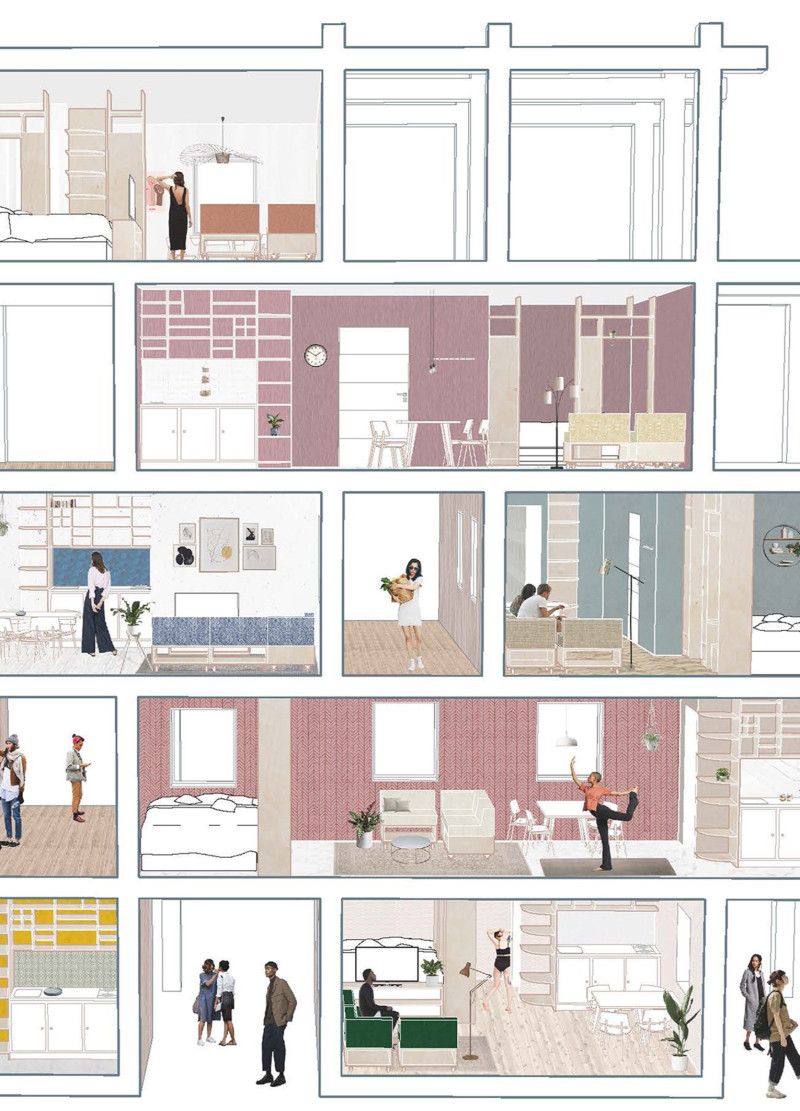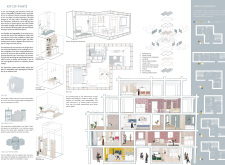5 key facts about this project
The MicroHome project addresses the complexities of urbanization by offering adaptable, modular living spaces designed for underused city areas. This housing solution focuses on creating practical options for interim residency within urban settings. By emphasizing flexibility and efficiency, the MicroHome redefines modern urban living, where space and community matter.
Modularity
The design consists of four distinct units, each serving specific residential functions such as sleeping, dining, and working. This modularity allows residents to personalize their living areas according to their needs, enabling a smooth transition between different daily activities. These units promote interaction among residents while also providing the necessary privacy each individual wants.
Materiality
Constructed using a timber frame, the MicroHome enables quick assembly and disassembly. This choice of material supports the project’s overall flexibility and reflects a commitment to sustainable practices. The lightweight structure minimizes environmental impact and circumvents the limitations usually associated with more permanent housing options.
Urban Integration
The MicroHome effectively engages with existing urban infrastructure, connecting with the surrounding environment to promote both density and proximity. This integration is essential for fostering community within urban contexts, creating a collection of interconnected units that contribute to a cohesive living space. Each unit functions as a unique home while participating in a larger conversation about urban adaptability.
Functional Quality
The design prioritizes quality living in a compact form. Each space is created to ensure usability without sacrificing individuality. Features such as multi-functional furniture and adjustable layouts enhance the experience of limited square footage. This aspect demonstrates that thoughtful design can provide comfort and practicality, even when space is at a premium.
A notable aspect of the MicroHome is its ability to challenge traditional notions of urban living through easily adaptable architecture. It provides residents with customizable yet practical housing options that highlight both creativity and smart design.



















































